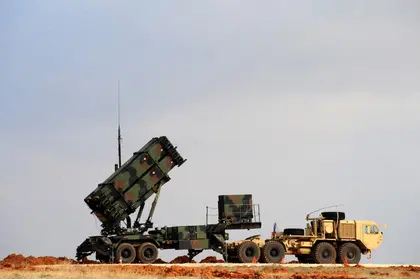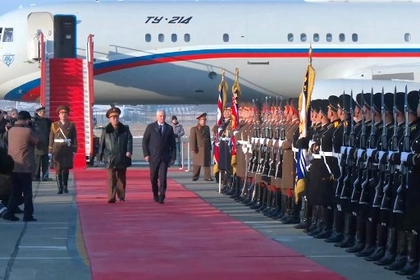The United States will give Ukraine top-of-the-line Patriot anti-aircraft missiles as part of $1.8 billion military assistance package, according to Dec. 21 news reports. The top-end American air defense technology will add a new layer to Kyiv’s air defense capacities, but not so much to prevent Russian drone attacks against Ukrainians cities.
JOIN US ON TELEGRAM
Follow our coverage of the war on the @Kyivpost_official.
The real significance of the transfer of the Raytheon/Hughes MIM-104 Patriot missile system, in the hands of the Armed Forces of Ukraine (AFU), will more likely be to give Kyiv the ability to pick a sector of the front and deny the air space above it to the aircraft of the Russian air force.
- Obtain the most current Ukraine news articles released today.
- Ukraine War Casualties
According to news reports, Washington will hand over to Kyiv a Patriot missile battery consisting of four to eight launchers, each armed with four interceptor missiles, and vehicle-mounted support vehicles carrying a power generator, radars and a control center. Washington has not provided details but, per past news reports, a single Patriot battery costs the American taxpayer or foreign military about $1 billion.
The Patriot system operates statically and, depending on missile model and type of target missiles and engagement, radars can track and destroy an aircraft-sized object at a range of 80 kilometers (50 miles). In past wars the U.S. military, and others, have used Patriot missiles to shoot down incoming missiles, and even ballistic missiles, but its primary design focus and main target was and remains combat aircraft.

British Defence Intelligence Update Ukraine 23 December 2024
The Kremlin’s drone bombardment campaign of Ukraine’s power grid, begun in October and conducted literally end-to-end across Ukraine’s 1,200+ kilometer-wide (750 mile) air space, will likely not be seriously impeded by a single four-launcher Patriot battery able to close, at best, an air gap less than 150 kilometers (93 miles) wide.
A second reality check faced by the Ukrainians, common to all anti-aircraft missiles, is the Russian Federation’s increasingly frequent use of low-flying, Iran-manufactured kamikaze drones, an order of magnitude smaller than strike aircraft. Since all air defense radars on average detect larger objects more easily, for the American Patriot system the range of a reliable intercept of an Iranian drone could fall from a standard anti-combat-jet distance of 80 kilometers (50 miles) to 20 kilometers (12 miles) or less.
But probably the more serious reason Patriot is unlikely to end Kremlin drone attacks on Ukraine is cost. An Iranian drone reportedly costs about $30,000 to $50,000, while a Patriot missile roughly costs around $1 million, making Patriot a worthwhile interceptor only for Russia’s most expensive cruise missiles - which the Russians in recent weeks have used less and less in preference to cheap Iranian drones.
Patriot, nonetheless, has plenty of selling points - just not for intercepting remote-control drones. The system is widely used by U.S. allies and its tracking radars and guidance technologies have been continuously updated since the 1990s. So - in sharp contrast to Russia’s much ballyhooed S-300 and S-400 air defense systems - it has mostly performed as advertised in three decades of operation around the world. During the first Gulf War, Patriot even managed to shoot down Iraqi ballistic missiles, a difficult hyper-velocity target the system hadn’t been specifically designed to intercept.
One possible Ukrainian use for Patriot would be to cover a relatively small area that needed very reliable air defense. Where the Patriot launchers are stationed Ukrainian air defenders would, in most cases, have an excellent bet no Russian aircraft and cruise missiles would get through and a reasonable bet no ballistic missiles would get through. But due to the way the radars are designed, and the size of Ukraine’s air space, small drones might not only be able to penetrate air space covered by a Patriot system, but even attack the very expensive American launchers and tracking systems themselves.
An alternate use for a Patriot missile battery, in the hands of AFU commander Valery Zaluzhny, would be to select a sector of the fighting line and effectively take total control of the air space above it. It would be an air operation the Ukrainians have not yet attempted, but, were it successful, in that sector the Ukrainian air force would have something close to air superiority, with Ukrainian strike aircraft able to operate if not with impunity then without much risk of Russian air force interference.
A Patriot battery in U.S. use needs more than 90 operators, whose training can last six months. Ukraine would be likely to pick experienced anti-aircraft crews to learn to use the American system, but, even were training shortened, a combat-capable Patriot missile battery would not be likely to see field use in Ukraine until spring at the earliest.
You can also highlight the text and press Ctrl + Enter






